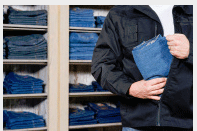Many employers required drug testing for their employees before they are hired, but the pre-employment screening does not necessarily stop there. Background checks for possible hires are sometimes a necessity, specially if you are in the retail industry where the smallest profit margin can make a big difference. What do you need to know before hiring a new employee? Are there any issues that are unlawful for you to pry into?
Follow the links for more information about this topic
Are you an employer who’s hiring? The importance of pre-employment background checks
if you’re an employer who’s hiring, you can’t afford the risks associated with not doing Pre-Employment Background Checks, advises Bay Area Investigations & Protection Services in Burlington, Ontario.
The need for employers to conduct pre-employment background checks for job applicants is now more important than ever before. Background checks can be critical to the safety and welfare of your business, your employees, and even third-parties such as suppliers. Anyone who is unfit to join your firm can jeopardize any part of your company, including its reputation, financial status, or the safety of others.
Background checks provide a company with the means to discover any false information or discrepancies that might not have appeared in a job application or through the company’s employment screening process. Keep in mind: your company could be held liable for property damage, theft, or any harm that comes to another due to one of your hires!
How could pre-employment test be discriminatory?
Q. I am looking to hire new employees. Some applicants who did not qualify for the open positions are now threatening to sue, claiming that my pre-employment tests are discriminatory. What should I know about pre-employment tests?
A. Title VII of the Civil Rights Act of 1964 prohibits discrimination in all terms and conditions of employment on the basis of race, color, religion, gender or national origin. Title VII allows for the use of professionally developed screening procedures and tests, as long as they are not intended or used to discriminate.
However, an employer may use a test that has an adverse impact on protected groups if it can show that the test is job-related and consistent with the employer’s business needs. To prove that a test is job-related, it must require test-takers to demonstrate the knowledge, skill or ability to successfully perform the duties of the job, or it must be tied to the tasks required of the position.
‘It’s legal, but …’ Most municipal employees can use marijuana as long as it doesn’t affect work
“It’s legal, but…”
That was the subject line for an email from the city of Tigard about recreational marijuana use by employees.
“The rules that apply to the work place have not changed,” wrote Dana Bennett, human resources director with the city. “As you already know, it is against policy to be at work under the influence of any controlled substance, whether alcohol, prescription medication or marijuana.”
Employees at metro-area municipalities received similar reminders this past week. Most appear to be on the same footing with their drug use policies: Employees can smoke on their own time, but they can’t come to work stoned.
“It’s no different than coming to work intoxicated from alcohol,” said Cornelius City Manager Rob Drake.




 oss the nation display signs warning the would be shoplifters of the intent to prosecute them if they shoplift. Shoplifting and employee theft cost retailers billions of dollars every year, but the problem persists, and in some communities shoplifting incidents have increased.
oss the nation display signs warning the would be shoplifters of the intent to prosecute them if they shoplift. Shoplifting and employee theft cost retailers billions of dollars every year, but the problem persists, and in some communities shoplifting incidents have increased.
